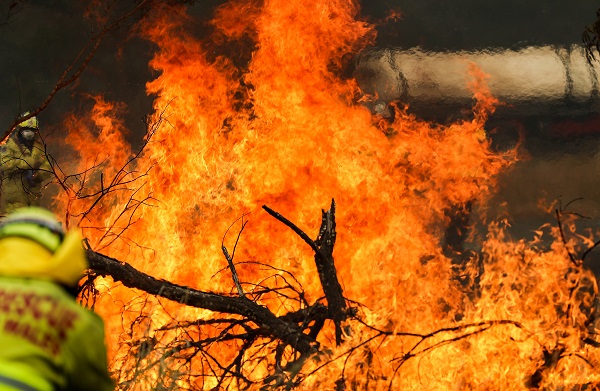Canberra, (Samajweekly) A high alert was issued on Monday for the states of New South Wales and Queensland on Australia east coast for potential bushfires due to extreme heatwave that has hit the region.
A total fire ban is in place for NSW’s north western and northern slopes areas on Monday with very high fire danger, Xinhua news agency quoted the state’s Rural Fire Service (RFS) as saying.
Over the weekend, most of Australia was hit by the extreme heatwave with temperatures reaching a high of at least 40 degrees Celsius.
Temperatures exceeded 40 degrees across NSW’s western areas and in the coast.
State capital Sydney recorded two consecutive days of a temperature over 40 degrees Celsius and its hottest November night on November 28.
The severe heat combined with hot winds created volatile conditions for the bushfire and a busy weekend for the firefighters and aircraft.
A property in Northmead to the west of Sydney was damaged without casualties.
Local media reported on Sunday that RFS crews have been battling more than 100 fires between the Victorianand Queensland borders in the last 48 hours.
“It’s certainly the worst day for fire risk since last fire season,” NSW RFS Commissioner Rob Rogers said in the interview with local media.
With temperature dropping on Monday, the bushfire incidents across NSW reduced to 50, none of which were more severe than advice level.
However, the authority still warned people of complacency.
“Although conditions are more favorable elsewhere, we are likely to see elevated fire danger across many parts of NSW return tomorrow,” RFS tweeted on Monday.
In the neighbouring state of Queensland, guests were evacuated from a popular resort on Monday morning as bushfire continued in the world heritage Fraser Island and moved towards the resort.
The fire, reported to be sparked last month by an illegal campfire, has been burning for six weeks and has destroyed more than 40 km of bushland.
Queensland Fire and Emergency Services (QFES) said in a statement on Monday that the fire is still burning in several locations.
Weather conditions continued to exacerbate fire and smoke conditions.
Smoke will affect visibility and air quality on the Fraser Island and adjacent mainland areas over the coming days.
QFES and Queensland Parks and Wildlife Service in conjunction with the Butchulla Aboriginal Corporation are working to limit the spread of the fire and minimize environmental and cultural impacts.
Water bombing aircraft will continue to support fire ground actions.
Travelling to the island remains restricted.
The Bureau of Meteorology (BOM) also warned of continued fire danger in the southern and eastern Australian states as the record-breaking heatwave will continue in the coming days.
“Severe to extreme heatwave conditions are expected across much of southern Queensland and northern NSW over the coming days.
“With the heat peaking in southern inland Queensland today, inland NSW on Tuesday and southeast Queensland and northeast NSW on Wednesday, severe fire dangers are forecasted across much of southern Queensland, inland NSW and northern Victoria on Tuesday as winds increase and maximum temperatures reach 10 to 18 degrees above average,” meteorologist Dean Narramore told a briefing on Monday.
Thirty-three people died, including nine firefighters, in the 2019-20 “Black Summer” bushfires, which burned from July 2019 to March 2020.
The smoke blanketed much of Australia, including capital cities, and contributed to hundreds of deaths.
Nearly 3 billion animals were killed or displaced, and the fires harmed many threatened species and ecological communities.










